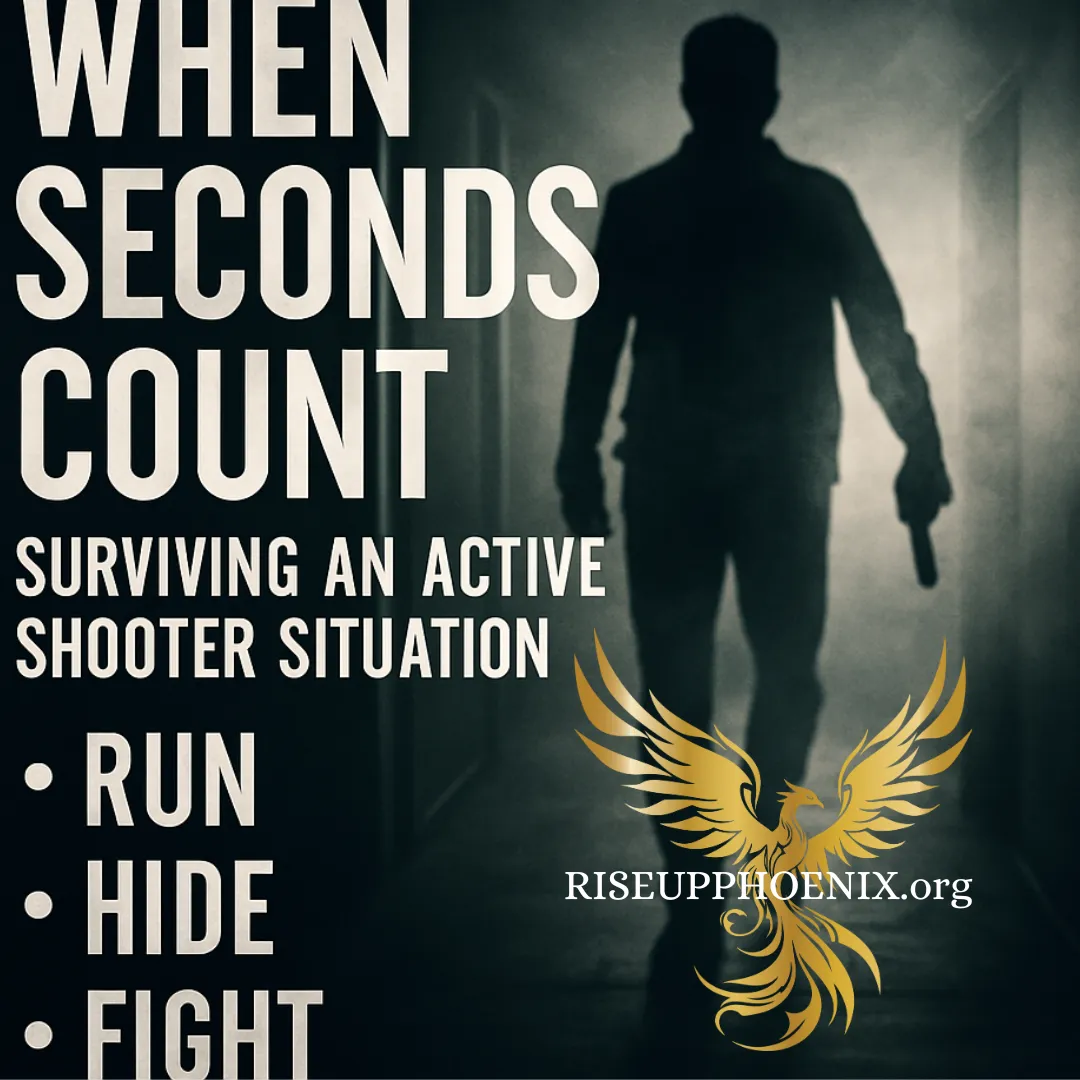
When Seconds Count: Surviving an Active Shooter Situation
When Seconds Count – Surviving an Active Shooter Situation
Trigger Warning: This post discusses real-life events involving active shooter incidents, gun violence, and emergency trauma response. Some readers may find the content distressing. Reader discretion is advised.
Active shooter incidents are no longer rare, far-off tragedies—they are showing up in schools, malls, grocery stores, places of worship, and workplaces across the country. This is not about living in fear. It’s about being prepared.
In our latest podcast episode, "When Seconds Count," we discuss how to respond during an active shooter situation, how to equip your family with a plan, and what to carry that could mean the difference between life and death.
Understanding the Reality
According to the Gun Violence Archive, the U.S. experienced nearly 500 mass shootings in 2023 alone. These events happen fast—most are over within 10 minutes. Many victims don’t die from the gunshot itself but from blood loss while waiting for help.
We highlighted several real-life examples to bring this point home:
The Covenant School Shooting (Nashville, 2023): Six lives were lost in under 15 minutes.
Greenwood Park Mall (Indiana, 2022): A 22-year-old legally armed bystander stopped a gunman in just 15 seconds.
Pulse Nightclub (Orlando, 2016): Forty-nine killed, many bled out while law enforcement was still clearing the scene.
Fordyce, Arkansas (2024): A gunman opened fire in a grocery store in broad daylight, killing four and injuring nine.
These were ordinary people doing ordinary things. No one expects to be caught in a mass shooting—and that’s exactly why we must prepare.
The "Run. Hide. Fight." Model
This nationally adopted model is a simple, life-saving strategy:
RUN: If you can escape safely, do so immediately.
HIDE: If escape isn’t possible, get out of sight, lock and barricade doors, silence your phone.
FIGHT: As an absolute last resort, disrupt or incapacitate the shooter using any means necessary.
Family Preparedness
Preparation is not just for professionals. Every parent, every teen, every family should have a plan. Practice drills in public places. Have age-appropriate conversations with children. Repetition builds reflexes.
We talk in the episode about the importance of situational awareness, decision-making, and preparing your family without creating fear.
Build a Trauma Kit You Can Carry
One of the most critical elements we discuss is the Personal Trauma Kit. Worn in a MOLLE pouch on your belt, kept in your car, or added to your go-bag, this kit should contain:
A real-deal tourniquet (CAT or RATS)
Hemostatic gauze (e.g., QuikClot)
Compressed gauze and pressure bandages
Chest seals (vented and non-vented)
Trauma shears
Nitrile gloves
CPR face shield
Thermal blanket
Medical tape and permanent marker
Mini flashlight or glowstick
Emergency instruction card
Want to learn how to use it? Find a Stop the Bleed training near you.
Final Thoughts
We can’t control the day violence finds us, but we can control how ready we are. Preparation is not panic—it’s power. And with the right tools, mindset, and awareness, we can protect the people we love.
Listen to the full episode here: RISEUP Voices From the Frontlines Podcast
Check out our training resources: www.riseupphoenix.org
Share this post. Print it. Discuss it. Because when seconds count, preparation saves lives.
#RiseUpPhoenix #FamilyPreparedness #ActiveShooterResponse #TraumaKit #StopTheBleed #CrisisReadiness #CommunitySafety
